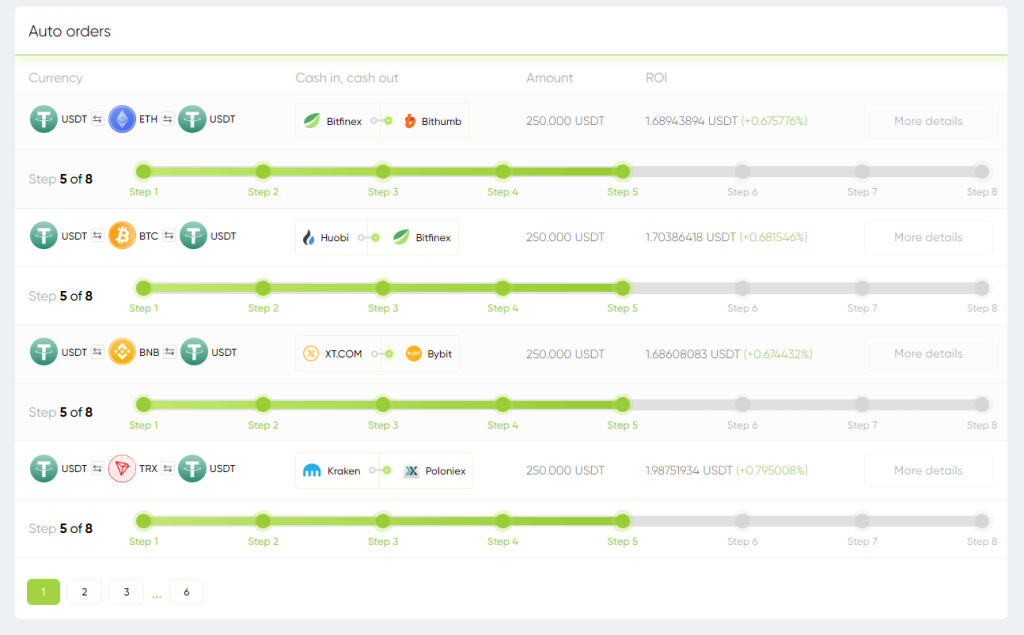The allure of doubling one’s money in just an hour often captures the imagination of seasoned investors and those new to the financial arena. Seeing an investment’s value increase twofold in such a short time is an enticing prospect.
While this can occasionally happen, it is crucial to approach such opportunities with a clear understanding of the potential risks and the rarity of such rapid returns.
High-return investment opportunities carry higher risk levels, which means that while the possibility for quick gains exists, so does the potential for significant losses.
Investment strategies promising quick returns, such as day-trading stocks, trading binary options, or engaging in service arbitrage, require a combination of skills, market knowledge, and often a bit of luck. These tactics may yield fast results for some, but they could lead to the loss of the entire invested capital for many.
More conventional methods of growing wealth, such as maximizing compound interest through savings or taking advantage of employer 401(k) matches, offer a lower-risk avenue for increasing one’s income over time.
Although these methods generally won’t double your money in an hour, they represent a sustainable path to growing wealth and potentially creating passive income streams.
Understanding tax implications and saving strategies is crucial when aiming to swiftly enhance one’s financial position. Every method will have different tax consequences that should be considered and varying degrees of impact on one’s overall income.
The balance between seeking substantial returns and managing risk effectively is key. Whether through active investment methodologies promising rapid growth or through more passive, slower-growing instruments, an educated approach to doubling one’s money is crucial to navigating the intricate world of personal finance.

Cryptocurrencies, such as Bitcoin and Ethereum, have become popular investment avenues due to their potential for high returns. These digital currencies operate independently of traditional financial markets and can experience significant volatility, leading some investors to consider them for rapid appreciation of their funds.
Investing in cryptocurrencies with the goal of “double your money” in a short timeframe is a high-risk strategy. The market is unpredictable, and while fast gains are possible, they are not guaranteed. Below is a breakdown of key factors to consider:
| Factor | Description |
|---|---|
| Market Trends | Volatility can lead to rapid appreciation, but also significant losses. |
| Investment Timing | Markets may shift rapidly, and timing can heavily influence profitability. |
| Tax Implications | Profits from trading cryptocurrencies may be taxable, similar to trading stocks. |
| Investment Knowledge | Understanding the currency and the market is crucial for informed trading decisions. |
Investors should practice caution when looking to trade cryptocurrencies with the expectation of doubling their money. Adequate research, a clear understanding of tax obligations, and acceptance of potential risk are crucial to effectively navigating the crypto market and its possible rewards.

Day trading involves buying and selling stocks within the same trading day. Traders capitalize on short-term volatility in the financial markets, attempting to generate returns that exceed what traditional, long-term investment strategies may offer.
Why Day Trade?
Required Knowledge and Tools:
Risks of Day Trading:
Financial Commitment:
Strategies for Day Trading:
Best Practices:
Given the unpredictable nature of the stock market, day trading can be akin to starting a business, requiring strategy, dedication, and the acceptance of potential financial loss. It’s not suitable as a primary source of income for most due to its speculative nature. Always balance the potential for profit against the significant risk incurred.
See Related: How to Make $1000 a Month in Passive Income

When aiming to double your money quickly, one opportunity lies in claiming welcome bonuses from online casinos. These bonuses are a form of marketing strategy designed to attract new users.
A typical welcome bonus might offer a 100% match on your initial deposit. For instance, if you deposit $100, the casino will add another $100 to your bank account in bonus funds.
Key Points to Consider:
Before engaging, consider the following:
Remember, bonus offers are typically subject to terms that require a certain amount of play. These offers can effectively double your investment within an hour, but they come with substantial risk. The chance of loss is significant, and it is fundamental to play responsibly and within personal financial limits.

Diversifying your portfolio through real estate can provide both substantial returns and passive income opportunities. With strategic investment choices like flipping properties or investing for appreciation, you tap into wealth-building avenues that offer multiple profit mechanisms, including leverage, cash flow, and tax benefits.
Real estate investing encompasses purchasing properties to generate income through rental earnings or capital appreciation. This asset class can yield passive income and potentially offer a better return rate than traditional investment vehicles like the S&P 500 index fund.
Key Characteristics:
Real estate offers a compelling case for long-term investing. While not without risk, it’s considered lower risk relative to other high-return investments. Historically, it has also served as a hedge against inflation, maintaining its value as the purchasing power of cash diminishes over time.
House flipping involves purchasing a property at a low price, renovating it, and selling it at a higher price within a short time frame. If executed correctly, this method can double your money, but it requires a solid understanding of the market and the ability to perform or manage renovations efficiently.
Key Points:
Investors often move on to multiple flips to scale effectively, using profits from each to fund subsequent projects. However, flipping is capital-intensive and can be riskier than other real estate investments due to its reliance on market timing and the quality of renovations.

Arbitrage offers an opportunity to double your money quickly by exploiting price differences in various markets. The concept involves buying a product or asset in one market at a lower price and simultaneously selling it at a higher price in another, capturing the differential as profit.
In service arbitrage, you act as a middleman, offering services on platforms like Craigslist or Facebook Marketplace without performing the service yourself.
Instead, you delegate to a lower-cost provider and charge a premium for your coordination efforts. This method relies on your ability to find and market to clients effectively while maintaining quality through reliable service contractors.
This involves buying goods from sources like clearance sales or thrift stores and reselling them on Amazon or other e-commerce platforms. It’s crucial to research and understand market demand to identify profitable items.
Note on Investment:
While arbitrage can generate income, it shouldn’t be confused with traditional investment options like stocks, which can offer compounding by reinvesting returns. Arbitrage requires active management and depends on market inefficiencies, which may not always be present.
Arbitrage is not a guaranteed method to double your money within an hour. Success depends on market conditions, the selected products or services, and competitive pricing strategies. Consider the associated risks and conduct thorough research before engaging in arbitrage opportunities.

Dropshipping is an online business model allowing entrepreneurs to sell products without holding inventory. As a dropshipping business owner, you market and sell items, which are then shipped directly to the consumer by a third party. A strategic approach to online marketing is required to attract customers and generate income.
Investment and Costs:
Marketing Strategies:
Income and Rate of Return:
Risks and Considerations:
Compared to other investment options like index funds or flipping items, dropshipping offers the allure of significant returns if executed properly. However, it involves different and sometimes higher risk levels due to variables like market saturation and dependency on supplier relations.
See Related: Best Books on Making Money Online

Selling digital products and courses is a viable strategy for individuals aiming to increase their income within a short timeframe. Digital products can include a broad range of items, such as ebooks, software, music, videos, photography, templates, or even comprehensive online courses.
Leveraging personal knowledge and skills can transform expertise into a marketable digital product or course, capitalizing on online education and digital consumption trends.
Advantages of selling digital products:
To monetize your knowledge through digital products effectively, consider the following steps:
Remember, while the initial investment of time and resources in creating and marketing your digital product can be substantial, the potential income generated from sales may compound over time without the proportional increase in ongoing effort.
This is akin to earning returns in an investment portfolio where compound interest can lead to exponential growth, referenced by the rule of 72 for estimating an investment’s doubling.
However, unlike a savings account or stock investment, the success of digital products can be significantly influenced by the effectiveness of marketing strategies and the continual updating of products to stay relevant.
Freelancing platforms, affiliate marketing, and online marketplaces can be additional channels to distribute and sell digital goods.
Although it presents an opportunity, selling digital products should be regarded as a business venture with inherent risks, including fluctuating demand and the need for continuous product and service innovation.
In summary, while no guarantee exists for doubling money within an hour, selling digital products offers a plausible avenue for increasing income through strategic creation, investment in marketing, and leveraging online business platforms.
Last updated: March 14, 2024